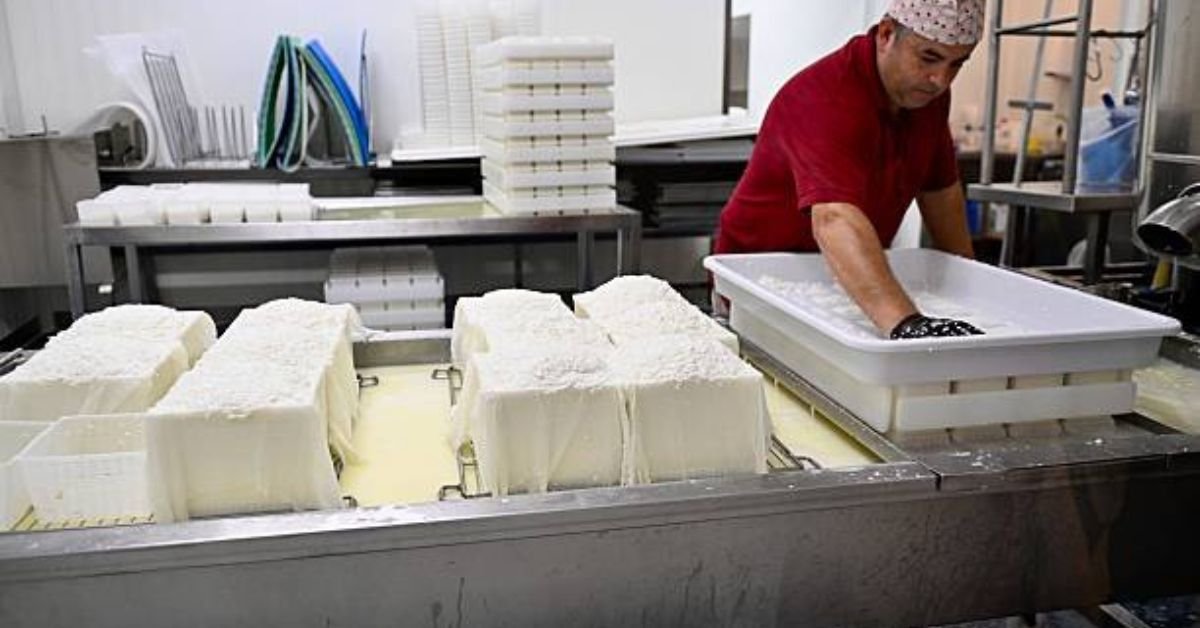BLOG
From Hawaii to Tennessee: A NYT Tale

In a world where geography shapes identity, the journey from Hawaii to Tennessee unfolds as a tale of contrast, culture, and convergence. The New York Times (NYT) has long been chronicling the pulse of American life, capturing the nuanced stories that lie in the spaces between states, oceans, and mountains. This narrative spans two distinct corners of the country—Hawaii’s Pacific serenity and Tennessee’s Southern charm—and explores how these vastly different states intersect in the lives of the people who traverse them.
Island Roots: The Hawaiian Essence
Hawaii is more than just a tropical paradise; it’s a cultural mosaic steeped in native Hawaiian heritage, Polynesian traditions, and a complex colonial past. From the rhythmic beat of hula to the communal feasts of a traditional luau, island life reflects a deep respect for nature, ancestry, and unity. Honolulu, the state capital, is a bustling urban center nestled among volcanic ridges and surf-laden coastlines. Yet beyond the tourist-filled beaches, small-town communities like Hilo or Waimea foster a slower, spiritual way of life.
In recent years, NYT reports have explored how Hawaiian values such as aloha ʻāina (love of the land) are influencing environmental activism, renewable energy movements, and sustainable tourism practices. As housing shortages and cost-of-living concerns escalate, many residents have been forced to relocate, sparking migration waves toward the U.S. mainland—one of the most unexpected destinations being Tennessee.

Tennessee’s Timeless Appeal
While the Aloha State offers oceanfront sunsets and palm trees, Tennessee counters with rolling Appalachian foothills, blues music, and barbecue smoke drifting through the air. The Volunteer State holds deep roots in American history, from Civil War battlegrounds to the birthplace of country music in places like Bristol and Memphis’ blues scene. The Grand Ole Opry and Nashville’s honky-tonks embody a different rhythm than Hawaii’s slack-key guitars—but music remains a cultural lifeline in both locales.
The NYT has profiled stories of families leaving Hawaii in search of more affordable housing, better educational opportunities, and a slower cost of living in Tennessee. Towns like Chattanooga and Knoxville are seeing a quiet influx of new residents bringing island sensibilities to the Southern heartland.
A Tale of Two Economies
One of the most compelling contrasts between these states lies in their economies. Hawaii’s economy is heavily reliant on tourism, military spending, and imported goods, resulting in high consumer prices and a limited job market outside of hospitality. Tennessee, on the other hand, benefits from a diversified economy that includes automotive manufacturing, healthcare, and a burgeoning tech sector in Nashville.
For Hawaiians making the leap, this shift means trading high real estate prices and tight job markets for lower costs and broader opportunities. The New York Times has published features highlighting personal accounts of this migration, examining the trade-offs between cultural familiarity and economic stability.
Cultural Collisions and Harmonies
At the core of this migration story are individuals and families navigating the emotional landscape of leaving home. Hawaiian culture is deeply place-based, and uprooting from ancestral lands carries profound implications. However, many find that Tennessee’s warm hospitality and strong sense of community echo some of the same values held dear in Hawaiian culture.
Church gatherings, neighborhood potlucks, and local art scenes have offered a sense of belonging for newcomers. In certain neighborhoods of Nashville and Knoxville, one can find Hawaiian food trucks, cultural festivals, and even hula schools—proof that cultural heritage persists and adapts across time zones.
The NYT has captured how these cultural exchanges foster mutual understanding. Hawaiian newcomers often bring a mindfulness rooted in island life—an awareness of land stewardship, community cohesion, and wellness—that enriches their new Southern surroundings.
Educational Shifts and Family Life
For many families moving from Hawaii to Tennessee, education is a top priority. Public schools in Tennessee vary widely, but several districts boast magnet programs, STEM-focused academies, and access to dual-enrollment college courses. Compared to Hawaii’s limited options outside of private schools, this can be a major pull factor.
The NYT has profiled families navigating the transition, spotlighting the challenges of academic pacing, cultural identity, and racial dynamics. While both Hawaii and Tennessee have racially diverse populations, their histories of integration, systemic inequality, and racial discourse differ sharply.
Yet stories of resilience abound: Hawaiian parents organizing cultural workshops in Tennessee schools, students learning to balance native identity with Southern norms, and educators recognizing the value of multiethnic perspectives in the classroom.
Landscapes of the Soul
Geographically, Hawaii and Tennessee could not be more different. One is a volcanic archipelago surrounded by ocean, the other a landlocked state of forests, mountains, and winding rivers. And yet, both landscapes shape the soul. Whether surfing at Waikīkī or hiking the Smoky Mountains, nature plays a healing and grounding role.
The NYT has documented how transplanted Hawaiians find new meaning in Tennessee’s natural beauty—picnics under fire-colored maples in fall, fishing trips in the Tennessee River, or listening to cicadas hum at dusk. Nature, in both cases, offers a way to reconnect with self and place.

FAQs
Q1: Why are people moving from Hawaii to Tennessee?
A1: Many are seeking more affordable housing, better job opportunities, and improved education systems. Tennessee offers a lower cost of living and a welcoming atmosphere that appeals to those looking for a lifestyle change.
Q2: How does the culture in Tennessee compare to Hawaii?
A2: While vastly different in tradition and history, both cultures value community, hospitality, and music. Hawaiian newcomers often find parallels in Southern warmth and family-oriented environments.
Q3: What challenges do Hawaiian families face when relocating to Tennessee?
A3: Cultural adaptation, homesickness, and educational transitions can be difficult. However, many families also find new opportunities and support networks that help them adjust.
Q4: Are there Hawaiian communities or cultural events in Tennessee?
A4: Yes, there are growing Hawaiian cultural presences in cities like Nashville and Knoxville, including food trucks, hula classes, and Pacific Islander cultural festivals.
Q5: How has the NYT covered this migration trend?
A5: The New York Times has published personal stories, economic analyses, and cultural features that highlight the complexities of moving between these two unique states.
Conclusion
The movement from Hawaii to Tennessee is more than just a relocation—it’s a reflection of the changing American story. It’s about redefining home, carrying culture across miles, and building bridges between seemingly disparate worlds. As the New York Times continues to spotlight these quiet revolutions of daily life, it reminds us that behind every zip code is a story waiting to unfold.
BLOG
Besos Meaning: A Journey into the Heart of Latin American Culture

Besos is derived from the Spanish language, where it translates to “kisses.” However, the meaning of besos goes beyond a simple translation. It’s a term that encompasses a range of emotions, from affection and love to passion and intimacy.
The Cultural Significance of Besos
In many Latin American cultures, besos are an integral part of daily life. They’re a way to show affection, greet one another, and express love. The cultural significance of besos is deeply rooted in the values of warmth, hospitality, and closeness.

The Different Types of Besos
While the term “besos” is often associated with romantic love, it’s not the only context in which it’s used. Besos can be exchanged between family members, friends, and even as a greeting or farewell.
- A beso on the cheek is a common greeting in many Latin American countries.
- A beso on the lips is often reserved for romantic partners or loved ones.
- A beso on the forehead or hand can be a sign of respect, affection, or blessing.
“I remember my abuela giving me besos on the forehead every night before bed. It was a special moment that made me feel loved and safe.”
The Emotional Significance of Besos
Besos are more than just a physical gesture; they’re a way to convey emotions and connect with others. The act of giving or receiving a beso can evoke feelings of comfort, security, and love.
FAQs
Q: What is the meaning of besos in Spanish?
A: Besos is the Spanish word for “kisses.” It’s a term used to describe a range of affectionate gestures, from romantic kisses to friendly pecks on the cheek.
Q: How do you use besos in a sentence?
A: You can use besos in a sentence to express affection or love, such as “Dale besos a tu familia de mi parte” (Give your family a kiss from me).
Q: What is the cultural significance of besos in Latin America?
A: Besos play a significant role in Latin American culture, where they’re used to show affection, greet one another, and express love.
Q: Can besos be used in non-romantic contexts?
A: Yes, besos can be used in non-romantic contexts, such as between family members or friends. It’s a way to show affection and closeness.
Conclusion
Besos, we discover that it’s more than just a word – it’s a way to connect with others and express our emotions. Whether you’re looking to deepen your understanding of Latin American culture or simply want to show affection to those around you, besos is a term that’s worth exploring further.
BLOG
Luxury Cruise Passengers: Staying Safe on the High Seas

Luxury cruises often traverse through exotic waters, some of which are notorious for piracy. The Gulf of Aden, the Indian Ocean, and parts of Southeast Asia are known hotspots where pirates have been active. These areas are often near popular cruise routes, putting luxury cruise passengers at risk.
Piracy Tactics: How Pirates Target Luxury Cruises
Pirates have become increasingly sophisticated, using tactics like GPS spoofing and fake ship identities to target unsuspecting vessels. They often look for easy prey, such as slow-moving ships or those with lax security. Luxury cruises, with their high-value passengers and cargo, can be attractive targets.
The Human Impact: Stories from Luxury Cruise Passengers
“I was on a luxury cruise in the Gulf of Aden when we received a piracy warning. The crew immediately took action, increasing security measures and altering our course. It was a harrowing experience, but thanks to their quick response, we were safe.” The fear and uncertainty that come with a piracy warning can be unsettling, but being prepared and knowing what to expect can make all the difference.
Staying Safe: Precautions and Measures for Luxury Cruise Passengers
To minimize the risk of piracy, luxury cruise lines have implemented various security measures. These include:
- Traveling in convoys or with naval escorts
- Implementing advanced security systems, such as radar and surveillance cameras
- Conducting regular security drills and training for crew members
- Increasing security personnel on board

What Luxury Cruise Passengers Can Do
While cruise lines take necessary precautions, passengers can also play a role in staying safe. Being aware of the risks and taking simple precautions, such as staying informed about piracy hotspots and following crew instructions, can help minimize the risk of piracy.
Piracy Warning Systems: How Luxury Cruises Stay Ahead
Luxury cruise lines use advanced piracy warning systems to stay informed about potential threats. These systems provide real-time updates on piracy hotspots and suspicious activity, enabling crews to take proactive measures to avoid danger.
The Role of Technology in Piracy Prevention
Technology plays a vital role in preventing piracy. Advanced systems, such as satellite tracking and AI-powered surveillance, help cruise lines stay one step ahead of pirates. These technologies enable crews to respond quickly and effectively in the event of a piracy warning.
FAQs
Q: What should I do if I receive a piracy warning on my luxury cruise?
A: If you receive a piracy warning, follow the instructions of your crew immediately. They are trained to handle such situations and will take necessary precautions to ensure your safety.
Q: Are luxury cruises more vulnerable to piracy than other types of cruises?
A: Luxury cruises can be attractive targets for pirates due to their high-value passengers and cargo. However, luxury cruise lines often have advanced security measures in place to minimize the risk.
Q: How can I stay informed about piracy hotspots and safety measures on my luxury cruise?
A: Your cruise line will provide you with information about piracy hotspots and safety measures in place. You can also stay informed through government travel advisories and industry reports.
Q: Can I travel safely on a luxury cruise despite the risk of piracy?
A: Yes, with the right precautions and awareness, you can travel safely on a luxury cruise. Cruise lines take piracy seriously and have measures in place to protect passengers.
Conclusion
Luxury cruise, staying informed about piracy risks and taking necessary precautions can help ensure a safe and enjoyable journey. By understanding the risks and being aware of the measures in place to prevent piracy, you can relax and enjoy your time on board.
BLOG
Mandarin for Mandarin: Tips and Tricks for Language Learners

Mandarin can be a rewarding and enriching experience, especially when you focus on learning Mandarin for Mandarin. By doing so, you can:
- Improve your pronunciation and intonation
- Develop a deeper understanding of Chinese culture and history
- Enhance your career opportunities in China or with Chinese companies
Immersing Yourself in the Language
One of the most effective ways to learn Mandarin for Mandarin is to immerse yourself in the language. This can be done by:
- Watching Chinese movies and TV shows
- Listening to Chinese music and podcasts
- Speaking with native Mandarin speakers
For example, “I started watching Chinese dramas with English subtitles and it really helped me improve my listening skills and get used to the natural flow of the language.”

Tips for Learning Mandarin for Mandarin
When it comes to learning Mandarin for Mandarin, there are several tips to keep in mind:
- Focus on tones and pronunciation
- Practice speaking and listening regularly
- Use language learning apps and resources
Using Language Learning Apps
There are many language learning apps available that can help you learn Mandarin for Mandarin. Some popular options include:
- Duolingo
- HelloTalk
- Pleco
FAQs
Q: What is the best way to learn Mandarin for Mandarin?
A: The best way to learn Mandarin for Mandarin is to immerse yourself in the language by watching Chinese media, speaking with native speakers, and practicing regularly.
Q: How can I improve my Mandarin pronunciation?
A: You can improve your Mandarin pronunciation by listening to native speakers, practicing speaking regularly, and using language learning apps that focus on pronunciation.
Q: What are some common challenges when learning Mandarin for Mandarin?
A: Some common challenges include mastering tones, understanding grammar and syntax, and finding opportunities to practice speaking and listening.
Q: Can I learn Mandarin for Mandarin on my own?
A: Yes, you can learn Mandarin for Mandarin on your own with the right resources and motivation. However, it’s also helpful to work with a language exchange partner or tutor to get feedback and support.
Conclusion
Mandarin for Mandarin requires dedication, persistence, and the right resources. By immersing yourself in the language, practicing regularly, and using the right language learning tools, you can achieve fluency and unlock new opportunities. Whether you’re a beginner or advanced learner, there’s always room to improve and refine your Mandarin skills.
-

 TECH6 months ago
TECH6 months agoApple iPhone 17: Official 2025 Release Date Revealed
-

 BLOG6 months ago
BLOG6 months agoUnderstanding the ∴ Symbol in Math
-

 EDUCATION6 months ago
EDUCATION6 months agoHorizontal Translation: How to Shift Graphs
-

 EDUCATION6 months ago
EDUCATION6 months agoUsing the Quadratic Formula
-

 EDUCATION6 months ago
EDUCATION6 months agoThe Meaning of an Open Circle in Math Explained
-

 HEALTH6 months ago
HEALTH6 months agoGoodNever: Wellness, Simplified
-

 EDUCATION6 months ago
EDUCATION6 months agoWhy Does m Represent Slope?
-

 EDUCATION6 months ago
EDUCATION6 months agoHow to Solve Quadratic Equations 2
